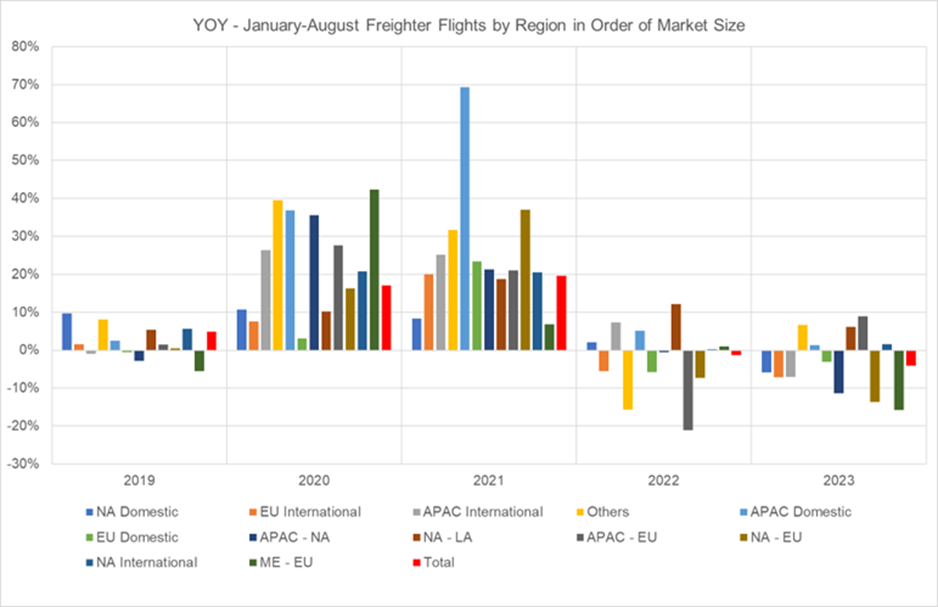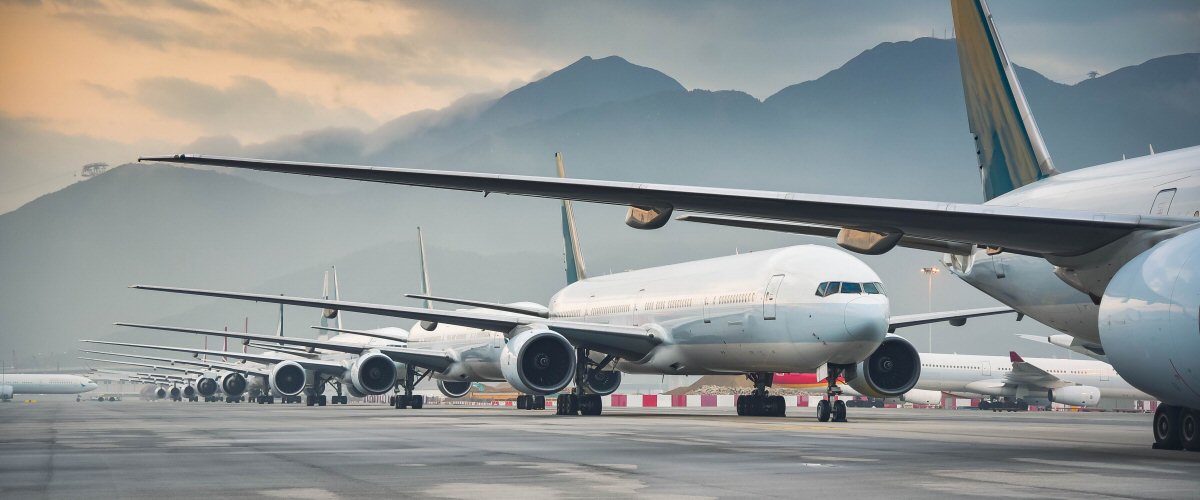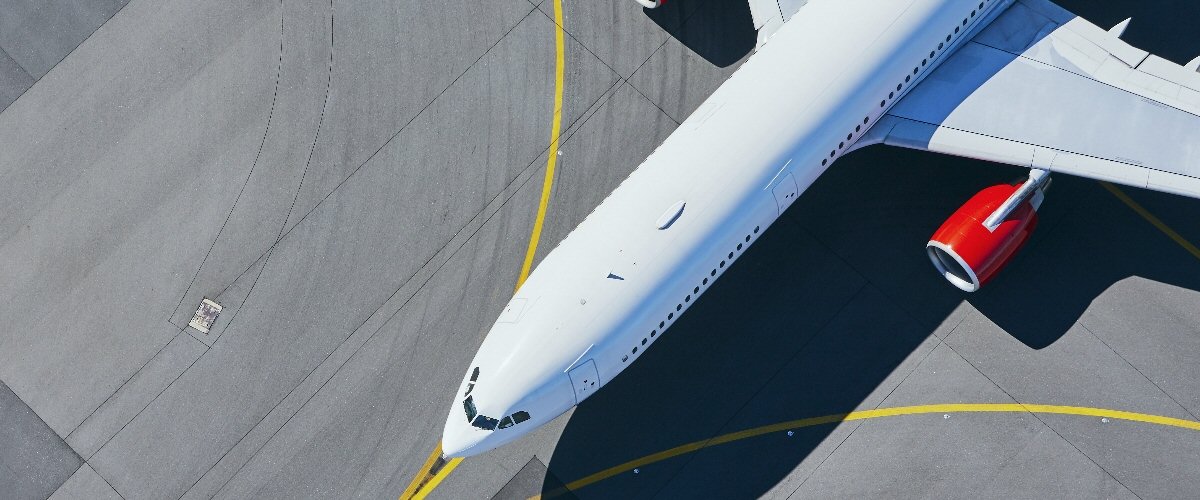Despite a continually growing dedicated freighter fleet, judging by the latest utilisation data, the number of dedicated freight flights continues to decline and has done since the end of 2021. In the first nine months of 2023, the total number of dedicated freighter flights has fallen by over 4% from the same period in 2022. Of course, this is mostly impacted by the North American domestic market which accounts for over a third of the movements, which itself has fallen by nearly 6%. Fleet-wise, the number of in-service dedicated freighters has actually increased by nearly 6% from the same point last year which does beg the question of how efficiently aircraft are being operated.
The chart below displays the year-over-year dedicated freighter flights as measured between January and August. As we see, the largest three sectors, North American domestic, intra-European international and intra-APAC international have been impacted the most. One particular example is Hong Kong – Incheon, which has seen dedicated freight frequency halve from the peak in October 2021. Globally, this has been impacted by the return of passenger belly freight, but also by the lower demand for PPE and vaccines, the increase of alternative transport options, and the effect of the economic headwinds. Conversely, the movement of freight by air between North and Latin America, APAC-Europe, and the smaller emerging markets (others) continues to show frequency growth.

Source: IBA Insight & Intelligence
In fleet terms, the number of aircraft has been steadily increasing to both account for the loss of belly freight in 2020/2021 and to find a home for unwanted passenger aircraft suitable for conversion. Conversions themselves have doubled since the recent low point in 2019 when just 74 aircraft were inducted, which doesn’t highlight a drop in demand but underlines the peak of demand for just about every passenger aircraft flying. Last year, the number was 151, just shy of the record set in 2021 by one. In the same vein, retirements have been plummeting since the peak of 2010 when 131 made their way to the desert after the market cratered. Last year, that number was just 38, the second lowest position over the past 15 years, after 2020 when zero serviceable aircraft were either retired or scrapped. Deliveries of new freighters have also continued to rise with 57 last year, again another record matched only by the resurgence in 2012. To combat the new deliveries and conversions, storage has also increased by 200 units since the start of 2022.
How specific models have been impacted is also important to note. In the table below, we show the monthly utilisation change from last year for five aircraft groups. Despite an impressive increase in 777F utilisation, bearing in mind the fleet has increased by 10%, the NGs, 767s and 747s show a decline of between 4 and 10%, highlighting the impact of the North American domestic market. The figures for the A321 may appear alarming, but this is because the fleet was very small last year, and the fleet is changing rapidly on a relative basis.
With 270 new aircraft on backlog and double that for conversions, it is sensible to assume that something must give if demand fails to return in short order. I suspect that outside of the already-announced retirements from FedEx, more will likely follow. As for conversions, it is natural to assume that some will be deferred. However, for many, this is a long-term play and not a reaction to short-term demand so the impact may remain limited to the availability of feedstock. That would certainly appear the case based on the number of “new line” announcements we see in the press. In the short to medium term though, reducing lease rates continues to highlight the supply/demand imbalance and the risk for those thinking of adding more supply.

Source: IBA Insight & Intelligence
Last edition, IBA followed the common conversation around Asia: when will they catch up with other regions’ recovery on 2019 levels? At 93% they still have some ground to make up (although Europe is also only 95%). When looking at profitability, however, dedicated long-haul carriers were some of the first out of the blocks. Now, with an H1 operating margin of 32.6%, Air Asia X are adding weight to this pattern.
Singapore Airlines managed to turn a healthy operating profit of 15.1% in 2022, through having a network outside of the locked down broader region. They have now stretched this to 22.9% in Q2 (their Q1). Similar profile, Cathay Pacific were able to benefit in the same fashion later on, recording an operating margin of 15.2% in H1. Air Asia X’s strong results is all the more significant as, excluding the restructuring cash flow, their 2021 operating margin was -105%.
The carrier is also an interesting case study as they run exclusively A330ceos. The airline was able to reduce CASK in other areas to compensate for high fuel prices on an old technology aircraft. Long-haul typically benefits from not needing as aggressive cost control as short-haul. Fellow Malaysian carrier Air Asia, the narrowbody sister airline, and Garuda, the neighbouring flag carrier, are both still loss-making. The latter recorded an H1 operating margin of -38.7% and is now rumoured to be considering merging with Pelita. As well as cost synergies, margins can be improved through aligning products (after the initial pain of refurb costs). In the US, there are rumours that fares on Spirit Airlines could rise a further 40% after being acquired by Jet Blue.
Elsewhere in the Asia Pacific region, both Qantas and Air New Zealand returned to profitability this week, in their annual results. Qantas had a strong operating margin of 13.6% whilst Air New Zealand also recorded an operating margin of 9.2%. Both were also comfortably profitable at the net level. Air China were also the first of the Chinese big three to publish their full H1 results. They are still at an operating loss of margin -1.4%, although this is much improved on the -67.0% in FY2022. With China returning to strength, Asian carriers with short-haul fleets may have their moment in the sun soon.
The Saudi aviation industry has been picking up the pace lately, with newly established national carrier Riyadh Air ordering 39 787-9s (with an option for 33 more). Now the national lessor, AviLease, is making even bigger moves by purchasing its Irish counterpart, Standard Chartered Aviation Finance, including all assets. This will result in almost tripling the existing AviLease portfolio, bringing it to a total of 167 aircraft, worth almost $7bn. This move as well as the purchase of 13 aircraft from Avolon in June this year go well in line with the Saudi government's Vision 2030 programme, which aims to make AviLease one of the top 10 lessors worldwide by the end of the decade.
The aviation leasing sector has bounced back strongly after last year’s Russo-Ukrainian war-related asset write-offs. The industry’s biggest players - AerCap and Air Lease Corporation noted astonishing Q2 net profit margins of 26% and 20% respectively. AviLease’s strategy is particularly well timed with the shortage of aircraft amid strong demand continuing. To further this state of affairs, Boeing has recently identified yet another quality problem at Spirit AeroSystems - its sole 737 fuselage supplier, and responsible for around 70% of the airframe parts. At the same time, Airbus operators are affected by faulty P&W GTF engines, with over 15% of A320s with that engine type grounded.
With waiting times longer than ever before, the decision to acquire a portfolio, which is ready to be leased makes sense. Additionally, according to IBA Insight, 97% of Standard Chartered’s fleet are Boeing 737NG/MAX and Airbus A320/A321 narrowbodies, which currently are the most sought-after aircraft by many airlines including Saudi-operated Flynas and flyadeal.
Currently, most of the aircraft are being leased to operators from North America and Asia Pacific, however, the question arises whether this will continue. The Middle East region is continuing to grow and now, alongside DAE, there is another large lessor in the region well placed to support it.
Our weekly update looks at the key trends and market indicators using data and analytics provided by IBA Insight.


凭借由获奖 ISTAT 认证评估师组成的庞大团队以及 30 多年累积的专有数据,IBA 在全球估值市场上处于领先地位。我们为全球范围内的一系列资产类型提供独立、公正的价值意见和建议,包括飞机、发动机、直升机、货机/航空货运、降落机位和预备件等。IBA 始终致力于超越客户的期望,我们的客观意见为贷款、资产收回、商业开发和再营销提供了必要的安全保障。

IBA 与全球领先的飞机和发动机租赁公司精诚合作。我们的专业建议植根于深厚的行业知识,因此 IBA 可以在投资周期的各个阶段提供支持,让客户放心无忧。从估值、机队选择、投资组合开发,到租赁结束时的退租和再营销,我们将全程协助客户完成整个租赁期的所有风险评估和资产管理活动。

航空投资往往错综复杂,会涉及大量财务风险,因此,放任资产不去管理绝对是下下策。无论是首次投资的新手,还是市场上驾轻就熟的资深投资者,IBA 都能帮助您克服各种资产类型的复杂性,让您更好地了解各种投资机会。我们可以与您携手合作,支持您的投资组合开发、多元化发展并满足您的战略需求。

30 多年来,IBA 与全球和地区航空公司紧密合作,提供估值和咨询服务、航空数据情报以及飞机和发动机的退租支持。我们在遍布世界各地的各种航空项目上与客户展开协作,满足他们的额外资源需求,随时随地提供所需的项目管理支持。

我们掌握着丰富资源并善于出谋划策,可为客户提供诉讼支持和纠纷调解办法,并根据客户的法律策略量身定制周密的解决方案。正是由于 30 多年来专有航空数据的积累、定期参与战略并购,以及丰富的飞机管理专业知识,我们能够经常接触到各方之间的典型争端领域。IBA 通过直接或与客户自己的法律团队合作的方式,在各个方面为客户提供帮助,从飞机损坏或损失的保险相关理赔,到常常在退租时发生的租赁商与承租商的纠纷。